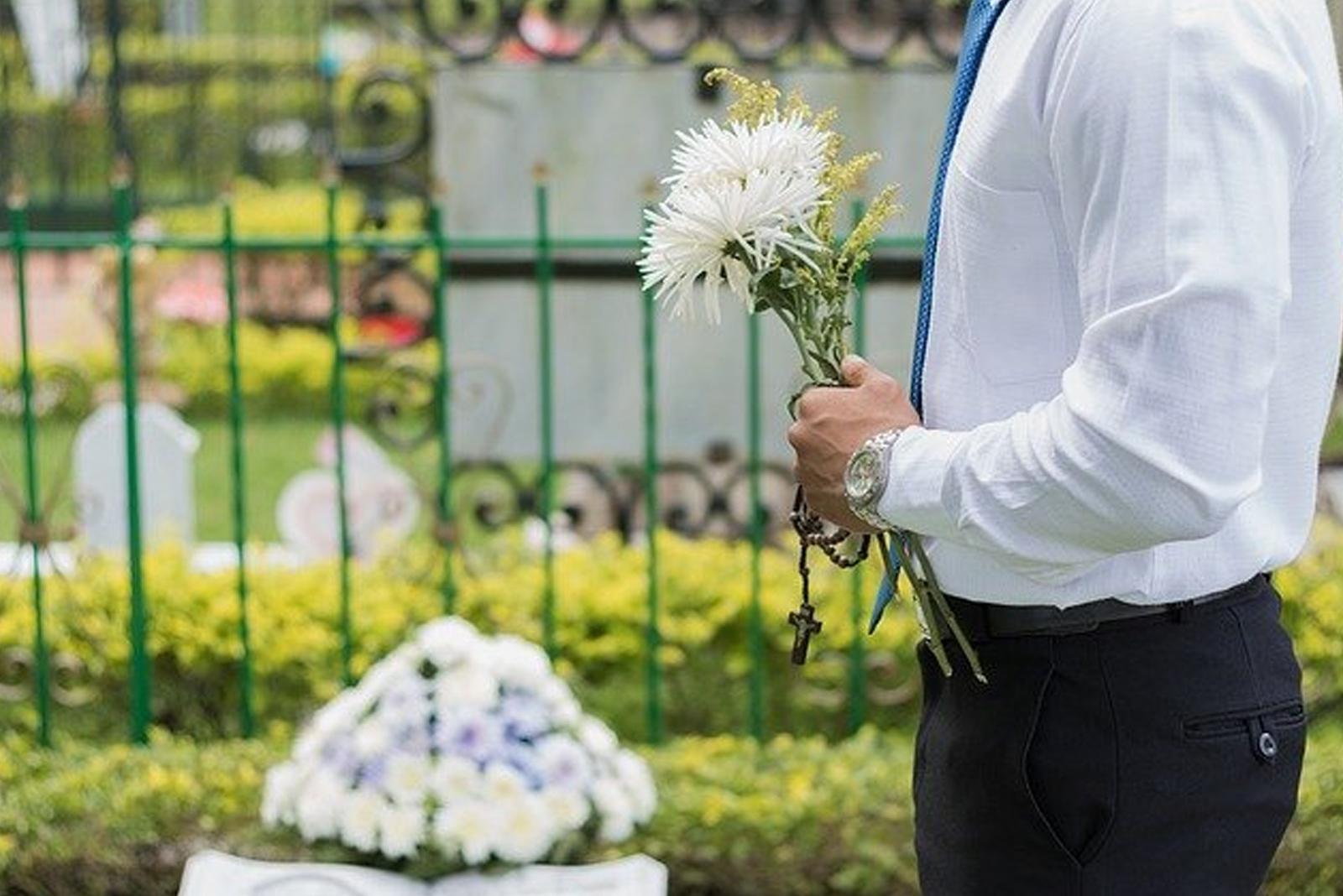Attending a funeral can be challenging, especially if you haven’t experienced one before. Often, asking the bereaved person questions about the service may be deemed inappropriate as they are mourning the death of a loved one.
Fortunately, we have created a comprehensive, easy to understand guide to help you understand proper funeral etiquette.
In this blog, we’ll be covering:
What is funeral etiquette?
Responding to a funeral invite
Understand the funeral tone
What to bring/offer at the funeral
What to wear at a funeral
When it's ok to decline a funeral invite
What to say at a funeral
Where it’s appropriate to sit
Essential things not to forget on the day
Funeral etiquette is a way to show respect to the deceased and their loved ones during the difficult time of grieving. Whilst it is important to note this is an easy guide to traditional funeral etiquette, different religions and cultures may approach funeral etiquette differently as there are no set rules that govern appropriate behavior at a funeral.
If you are attending a funeral for someone who comes from a different cultural background than you, it is recommended that you consider funeral etiquette specific to that culture and religion.
Here are some great guides based on the 4 most common religions:
If you are a friend, family, co-worker or acquaintance of the deceased, you’ll want to show your support by responding to the invitation confirming that you will be attending the funeral.
Attending a funeral may not always be convenient, however, your presence will be appreciated by the family. If you are unable to attend, it is good funeral etiquette to send a sympathy card or letter expressing your regret for not being able to attend.
In some cases, the funeral service details may be announced in a newspaper or another public forum. In this case, it is usually accepted that anyone can attend the funeral without the need to confirm their attendance. However for avoidance of doubt, it is worth contacting the funeral home to confirm that is the case.
Traditional funerals are usually somber in nature, as it is usually a time for reflection and sympathy. Crying quietly is normal and appropriate. Where possible, avoid overly expressive forms of grief such as loud crying as this can divert attention from the funeral proceedings. We understand that this can be difficult for some to control. If you sense that people are looking in your direction and feel uncomfortable, it is completely fine to leave the room and spend some time to recover before re-entering the room again.
It’s important to note that some funerals may have a more lively atmosphere. These are often celebrations of life and are less like a funeral and more like a joyful event. In these cases, the dress code and attitude at the event is likely to be completely different from a traditional funeral.
The invitation or announcement should clearly state that it is a celebration of life event, in which case you may want to adjust your attire and tone accordingly.
Your contribution to the funeral will be determined by your involvement. You may need to bring some extras, such as a memory book or a photo of the deceased, if you're a member of the immediate family.
However, if you're a visitor, memorial service gift-giving etiquette isn't always evident. It may even be determined by the funeral service's culture or religion.
While most funerals simply require you to bring yourself, here is a brief checklist of what you may consider bringing to a funeral or memorial service as a display of affection.
a) Online memorial
Online memorials are a beautiful way to remember and honor a loved one's life. If you are a close friend or family member of the deceased, it's also a nice thought to create an online memorial as a way to reach out to people to collect all of the photos and memories people have of the loved one who has passed. This can be easily shared at the funeral or memorial service as a slideshow with the click of a button.

b) Flowers

Funeral Flowers are the most common funeral gift. They’re a traditional way of honoring the deceased across many cultures.
It can be difficult to know which flowers are appropriate to send, which is why florists sometimes list them as “sympathy flowers”or “funeral flowers".
Here are the most common flowers, often given singularly or as a bouquet:
Lillies
Carnations
Roses
Orchids
Chrysanthemums.
It’s important to know how to send flowers to the funeral, ensuring proper timing. Here are 10 of the most common flower questions.
c) Sympathy card

Sympathy cards are also a great option to bring to the family. This can be matched with flowers if you choose. All you need is a short note that expresses your condolences and care for the deceased, if it is appropriate.
Here is a great example of how to write a sympathy card.
d) Funeral food or drink
It’s often a tradition to bring food to a funeral, but it is dependent on the occasion. To reduce the burden on the family of the deceased, it is considered polite to prepare or purchase food for the reception.
Bringing food to the service can reduce the pressure on the family. Here are some great options if you need to cook for a funeral:
Cultural dish
Baked goods
Finger desserts
Coffee and tea
Pasta bake.
e) Charity donation
A charity donation is also a thoughtful way to share your condolences.
A general rule of thumb is that a donation should be roughly the amount of the cost of a bouquet of flowers which ranges from $50 to $80 for a moderate to well-sized bouquet, and $100 or more for a large wreath.
Sometimes the funeral service details or online memorial will also include details of the charity to contribute the donation to.
Proper clothing etiquette at a funeral is important as you could offend people unintentionally. Clothing can vary depending on the funeral you are attending.
Here are some appropriate options for traditional funerals:
Traditionally, black is always appropriate.
Non-black clothing is acceptable, as long as it isn’t brightly colored.
Shirts/dresses should cover up to the neck.
Pants/dresses should cover the knees; avoid miniskirts or shorts.
Avoid athletic shoes or sandals.
In a casual setting, t-shirts may be appropriate – but avoid inappropriate prints.
Bring a formal jacket.
Dress as you would for a job interview.
Avoid revealing attire.
If you are a close friend or acquaintance to the deceased or family, it is highly recommended you attend the funeral to show your support. Although, ultimately, you should decide what is right for you.
If you cannot attend a funeral, here are some appropriate reasons why:
The service is in another state or country and is difficult to attend.
You have a medical condition which makes it difficult or impossible to attend.
Your relationship with the deceased was complex, unhealthy or abusive and would cause you to feel emotionally and/or physically unsafe.
A friend or family member has expressed discomfort in you attending the service.
If you attended, issues would arise for one or more individuals attending the service.
You have a mental health condition such as agoraphobia, panic disorder, or necrophobia and attending the event may be too triggering.
You have a pet, child, or other dependent individual who you are unable to bring to the funeral with you.
Whilst some people are quite uncomfortable sharing their emotions at funerals, others are quite adept at it.
If you are not sure what to say at a funeral, here are some common ways to maintain proper funeral etiquette and avoid accidentally saying the wrong thing:
"Sorry for your loss."
"He/She was a wonderful person."
Share a small story.
"I’m here for you."
Express your love.
"I’m thinking about you."
Share a funny thing they used to do.
Use a photo.
"I don’t know what to say, but I’m sorry."
"If there’s anything I can do for you, please let me know."
In traditional funerals, relatives will sit on the right side looking forward. Friends, acquaintances, co-workers, and others usually sit on the left looking forward. Close relatives will usually sit at the front.
Note that the “rules” for sitting are not usually defined and it’s unlikely that you will be given a specific seat. So, it’s important to educate yourself on this topic to avoid unintentionally offending someone.
Don’t take it personally if someone asks you to move in order to make room for others. It’s important not to focus on yourself at a funeral as this is a time for the family to grieve without any issues on the day.
Avoid Interruptions - Turn your mobile phone off before walking into the funeral.
Funeral Processions - If you are required to drive in the funeral procession, turn your car headlights on, follow the speed of the lead cars and do not overtake the cars in procession.
Be punctual - Make sure you show up on time.
Children - If you have children attending the funeral who are not content, take them outside.
Keep in Touch - If you are close to the family, remember to make contact with them after the funeral and remember that communication on key dates will be helpful for them.
Photography - Use your discretion if you choose to take photos at the funeral.
Share Memories - Share memories that you have of the loved one who has passed. If they did something that was meaningful to you, mention it to the family.
In Summary
We hope this blog has provided an easy guide to navigating proper etiquette when attending a traditional funeral.
Throughout this post we’ve covered what funeral etiquette is and why it’s important, The typical order of service, proper etiquette when attending a funeral, dressing for the respective tone of the service, what to bring, proper clothing etiquette, when it’s not appropriate to attend, what to say at a funeral, where it’s appropriate to sit and some essential things to remember for the day.
Hopefully this leaves you feeling more comfortable and confident when attending so that you can focus on your loss and support the family of the deceased as best as you can.
Also, If you are struggling with the loss of a loved one, or you want their memory to live on, we provide online memorials to help celebrate and remember their life.

